As a professional FY•X high quality 20S 60V/72V 60A CANBUS BMS for E-Motorcycles manufacture.Discover unmatched quality and innovation with our cutting-edge product offerings. As a leading supplier in China, we provide reliable solutions tailored to your needs. Elevate your business with us – your trusted partner for excellence.
This FY•X high quality 20S 60V/72V 60A CANBUS BMS for E-Motorcycles is a protective board solution specially designed by Huizhou Feiyu New Energy Technology Co., Ltd. for power supply 16-20 string battery packs. It is suitable for lithium batteries with different chemical properties and different numbers of strings, such as lithium ion, lithium polymer, Lithium iron phosphate, etc.
BMS has an RS485 communication interface, which can be used to set various protection voltage, current, temperature and other parameters, which is very flexible.The protection board has strong load capacity and the maximum sustainable discharge current can reach 40A. The protection board has LED power indicator and system operation indicator light, which can conveniently display various statuses.
● 20 batteries are protected in series.
● Charging and discharging voltage, current, temperature and other protection functions.
● Output short circuit protection function.
●Two-channel battery temperature, BMS ambient temperature, FET temperature detection and protection.
● Passive balancing function.
● Accurate SOC calculation and real-time estimation.
● Protection parameters can be adjusted through the host computer.
● RS485 communication can monitor battery pack information through the host computer or other instruments.
● Multiple sleep modes and wake-up methods.

Figure 1: BMS front view
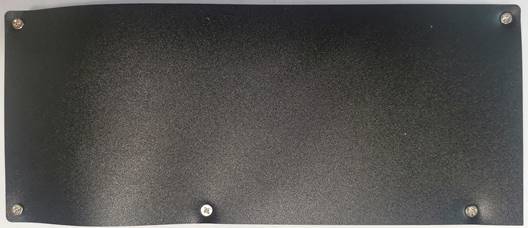
Figure 2: Physical picture of the back of BMS
|
Details |
Min. |
Typ. |
Max |
Error |
Unit |
||||||
|
Battery |
|||||||||||
|
Battery Gas |
LiCoxNiyMnzO2 |
|
|||||||||
|
Battery Links |
20S |
|
|||||||||
|
Absolute Maximum Rating |
|||||||||||
|
Input Charging Voltage |
|
84 |
|
±1% |
V |
||||||
|
Input Charging Current |
|
20 |
30 |
|
A |
||||||
|
Output Discharging Voltage |
56 |
72 |
84 |
|
V |
||||||
|
Output Discharging Current |
|
|
40 |
|
A |
||||||
|
Continuous Output Discharging Current |
≤40 |
A |
|||||||||
|
Ambient Condition |
|||||||||||
|
Operating Temperature |
-40 |
|
85 |
|
℃ |
||||||
|
Humidity (No Water-Drop) |
0% |
|
|
|
RH |
||||||
|
Storage |
|||||||||||
|
Temperature |
-20 |
|
65 |
|
℃ |
||||||
|
Humidity (No Water-Drop) |
0% |
|
|
|
RH |
||||||
|
Protection Parameters |
|||||||||||
|
Over-Charge Voltage Protection 1 (OVP1) |
4170 |
4.220 |
4270 |
±50mV |
V |
||||||
|
Over-Charge Voltage Protection Delay Time1(OVPDT1) |
1 |
2 |
5 |
|
S |
||||||
|
Over-Charge Voltage Protection 2(OVP2) |
4250 |
4.300 |
4350 |
±50mV |
V |
||||||
|
Over-Charge Voltage Protection Delay Time2 (OVPDT1) |
2 |
4 |
7 |
|
S |
||||||
|
Over-Charge Voltage Protection Release (OVPR) |
4050 |
4.100 |
4150 |
±50mV |
V |
||||||
|
Over-Discharge Voltage Protection 1 (UVP1) |
2.700 |
2.800 |
2.900 |
±100mV |
V |
||||||
|
Over-Discharge Voltage Protection Delay Time 1(UVPDT1) |
1 |
3 |
6 |
|
S |
||||||
|
Over-Discharge Voltage Protection 2 (UVP2) |
2.400 |
2.500 |
2.600 |
±80mV |
V |
||||||
|
Over-Discharge Voltage Protection Delay Time 2(UVPDT2) |
6 |
8 |
11 |
|
S |
||||||
|
Over-Discharge Voltage Protection Release (UVPR) |
2.900 |
3.000 |
3.100 |
±100mV |
V |
||||||
|
Over-Current Charge Protection 1 (OCCP1) |
28 |
30 |
33 |
|
A |
||||||
|
Over-Current Charge Protection Delay Time1 (OCPDT1) |
1 |
2 |
5 |
|
S |
||||||
|
Over-Current Charge Protection Release1 |
Automatic release or discharge after 30 seconds |
||||||||||
|
Over-Current Discharge Protection0 (OCDP0) |
45 |
50 |
55 |
±5 |
A |
||||||
|
Over-Current Protection Delay Time0 (OCPDT0) |
1 |
2 |
5 |
|
S |
||||||
|
Over-Current Discharge Protection Release 0 |
S |
||||||||||
|
Over-Current Discharge Protection1 (OCDP1) |
161 |
176 |
196 |
|
A |
||||||
|
Over-Current Protection Delay Time1 (OCPDT1) |
100 |
160 |
260 |
|
mS |
||||||
|
Over-Current Discharge Protection Release 1 |
Automatic release after 30 seconds |
||||||||||
|
Short circuit current protection |
444 |
|
1000 |
|
A |
||||||
|
Short circuit current protection delay time |
200 |
400 |
800 |
|
uS |
||||||
|
Short circuit protection Release |
Disconnect the load and delay 30±5s to automatically release or charge |
||||||||||
|
Short circuit instructions |
Short circuit description: If the short circuit current is less than the minimum value or higher than the maximum value, the short circuit protection may fail. If the short circuit current exceeds 1000A, short circuit protection is not guaranteed, and short circuit protection testing is not recommended. |
||||||||||
|
|
65 |
70 |
75 |
|
℃ |
||||||
|
|
55 |
60 |
65 |
|
℃ |
||||||
|
Discharge high temperature protection value |
-30 |
-25 |
-20 |
|
℃ |
||||||
|
Discharge high temperature release value |
-25 |
-20 |
-15 |
|
℃ |
||||||
|
Discharge low temperature protection value |
60 |
65 |
70 |
|
℃ |
||||||
|
Discharge low temperature release value |
50 |
55 |
60 |
|
℃ |
||||||
|
Charging high temperature protection value |
-8 |
-3 |
2 |
|
℃ |
||||||
|
Charging high temperature release value |
-3 |
2 |
7 |
|
℃ |
||||||
|
Charging low temperature protection value |
|||||||||||
|
Charging low temperature release value |
4.100 |
|
|
|
mV |
||||||
|
Cell balance |
|
|
4.099 |
|
mV |
||||||
|
Bleed Start Point |
40 |
|
|
|
mA |
||||||
|
Bleed Accuracy |
static equilibrium |
||||||||||
|
Bleed Current |
Turn on: Turn on when the voltage difference range is 25~200mV and the static equilibrium turn-on time does not exceed 5 hours; When charging, the current is less than 1A balanced and greater than 1A unbalanced; |
||||||||||
|
Balance Mode |
|||||||||||
|
Equilibrium description |
|
|
20 |
|
mA |
||||||
|
Current Consumption |
|
150 |
250 |
|
uA |
||||||
|
Normal Mode |
|
30 |
50 |
|
uA |
||||||
The above parameters are recommended values and users can modify them according to actual applications.

Figure 7: Protection principle block diagram
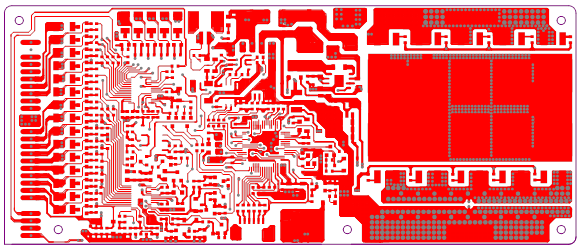
Figure 8: Motherboard top-level wiring diagram
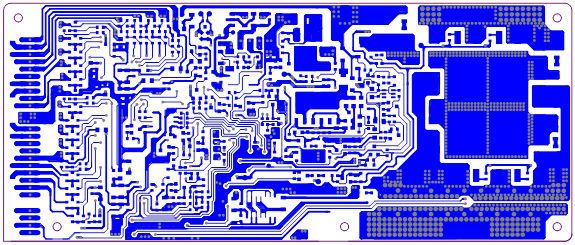
Figure 9: Motherboard bottom wiring diagram
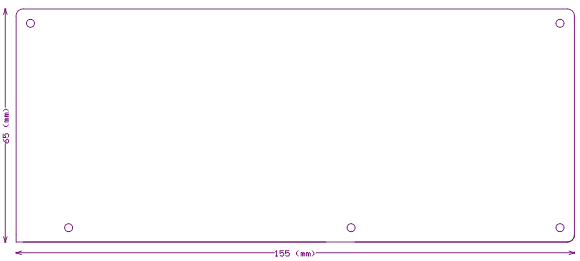
Figure 10: Dimensions 155*65 Unit: mm Tolerance: ±0.5mm
Protection board thickness: less than 15mm (including components)
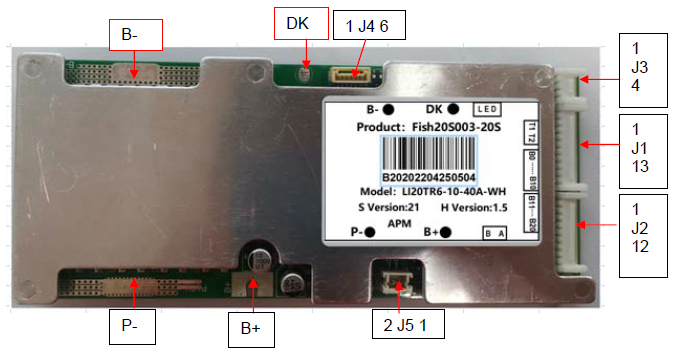
Figure 11: Protection board wiring diagram
|
Item |
Details |
|
|
B+ |
Connect to Positive Side of the pack. |
|
|
B- |
Connect to Negative Side of the pack. |
|
|
P- |
Charging and Discharging Negative Port. |
|
|
J1(low end) |
1 |
Connect to Negative of Cell 1. |
|
2 |
Connect to Positive Side of Cell 1. |
|
|
3 |
Connect to Positive Side of Cell 2. |
|
|
4 |
Connect to Positive Side of Cell 3. |
|
|
5 |
Connect to Positive Side of Cell 4. |
|
|
6 |
Connect to Positive Side of Cell 5. |
|
|
7 |
Connect to Positive Side of Cell 6 |
|
|
8 |
Connect to Positive Side of Cell 7 |
|
|
9 |
Connect to Positive Side of Cell 8 |
|
|
10 |
Connect to Positive Side of Cell 9 |
|
|
11 |
Connect to Positive Side of Cell 10 |
|
|
J2(high-end) |
1 |
Connect to Positive Side of Cell 11 |
|
2 |
Connect to Positive Side of Cell 12 |
|
|
3 |
Connect to Positive Side of Cell 13 |
|
|
4 |
Connect to Positive Side of Cell 14 |
|
|
5 |
Connect to Positive Side of Cell 15 |
|
|
6 |
Connect to Positive Side of Cell 16 |
|
|
7 |
Connect to Positive Side of Cell 17 |
|
|
8 |
Connect to Positive Side of Cell 18 |
|
|
9 |
Connect to Positive Side of Cell 19 |
|
|
10 |
Connect to Positive Side of Cell 20 |
|
|
J5(NTC) |
1 |
NTC1 (10K) |
|
2 |
||
|
3 |
NTC2 (10K) |
|
|
4 |
||
|
J3(communication) |
1 |
RS485A |
|
2 |
|
|
|
J4(LED) |
1 |
V3.3_LED |
|
2 |
K1 |
|
|
3 |
LED4 |
|
|
4 |
LED3 |
|
|
5 |
LED2 |
|
|
6 |
LED1 |
|
|
DK |
Address selection, the default address is 03, the address after DK and B+ are shorted is 04 |
|

Figure 12: Schematic diagram of battery connection sequence
|
LED1 |
LED2 |
LED3 |
LED4 |
|
Red (highlight) |
Emerald green (highlight) |
Emerald green (highlight) |
Emerald green (highlight) |
|
KEY |
Battery Status |
Capacity Indicator |
|||
|
LED4 |
LED3 |
LED2 |
LED1 |
||
|
NO |
-- |
OFF |
OFF |
OFF |
OFF |
|
YES |
0≤C≤25% |
OFF |
OFF |
OFF |
ON |
|
YES |
25<C≤50% |
OFF |
ON |
ON |
|
|
YES |
50<C≤75% |
OFF |
ON |
ON |
ON |
|
YES |
C>75% |
ON |
ON |
ON |
ON |
Note: When the button is turned on, the LED will turn off automatically after 10 seconds. When charging, it will flash at the highest current capacity.
|
KEY |
Battery Status |
Capacity Indicator |
|
|||
|
LED4 |
LED3 |
LED2 |
LED1 |
Flashing mode |
||
|
NO |
- |
OFF |
OFF |
OFF |
OFF |
- |
|
YES |
Low temperature protection |
flash |
flash |
flash |
flash |
4 lights flash 2 times |
|
YES |
High temperature protection |
flash |
flash |
flash |
flash |
4 lights flash 4 times |
|
YES |
Disconnection protection |
OFF |
flash
|
flash |
flash |
3 lights flash 3 times |
|
YES |
Mos tube damaged |
OFF |
OFF |
flash |
flash |
2 lights flash 3 times |
|
YES |
Under voltage protection |
OFF |
OFF |
OFF |
flash |
1 light flashes 5 times |
|
YES |
Other faults |
OFF |
OFF |
flash |
flash |
2 lights flash 5 times |
Note: Discharge failure flashes 3 times, charging flashes 3 times and then normal charging is displayed.
Warning: When connecting the protective plate to the battery cells or removing the protective plate from the battery pack, the following connection sequence and regulations must be followed; if operations are not performed in the required order, the components of the protective plate will be damaged, resulting in the protective plate being unable to protect the battery. core, causing serious consequences.
Preparation: As shown in Figure 11, connect the corresponding voltage detection cable to the corresponding battery core. Please pay attention to the order in which the sockets are marked.
Steps to install protective board:
Step 1: Solder the P-line to the P-pad of the protection board without connecting the charger andload;
Step 2: Connect the negative pole of the battery pack to B- of the protection board;
Step 3: Connect the positive terminal of the battery pack to B+ of the protection board;
Step 4: Connect the battery pack and battery rows to J1 of the protection board;
Step 5: Connect the battery pack and battery rows to J2 of the protection board;
Step 6: Charge and activate.
Steps to remove the protective plate:
Step 1: Disconnect all chargers\loads
Step 2: Unplug the battery pack and battery strip connector J2;
Step 3: Unplug J1 of the battery pack battery strip;
Step 4: Remove the connecting wire connecting the positive electrode of the battery pack from the B+ pad of the protective plate
Step 5: Remove the connecting wire connecting the negative electrode of the battery pack from the B- pad of the protective plate
Additional notes: Please pay attention to electrostatic protection during production operations.
|
|
Device type |
model |
encapsulation |
brand |
Dosage |
Location |
|
1 |
Chip IC |
BQ7693003DBTR |
TSSOP30 |
TI |
2PCS |
U9, U17 |
|
2 |
Chip IC
|
STM32F103RCT6 or STM32F103RET6 |
TQFP64
|
ST |
1PCS
|
U18 choose one from two
|
|
APM32F103RCT6 or APM32F103RET6 |
APM |
|||||
|
3 |
SMD MOS tube |
CRSS047N12N \TO220 |
TO220 |
China Resources Micro |
14pcs |
M2 M4 MC1 MC3 MC4 MC5 MC6 MD1 MD2 MD3 MD4 MD5 MD6 MD7 |
|
TK72E12N1\TO220 |
TOSHIB |
|||||
|
4 |
PCB |
Fish20S003 V1.4 |
155*65*1.6mm |
|
1PCS |
|
Note: If SMD transistors and MOS tubes are out of stock, our company may replace them with other models of similar specifications.

1 Huizhou Feiyu New Energy Technology Co., Ltd. logo;
2 Protection board model - (This protection board model is Fish20S003, other types of protection boards are marked, there is no limit to the number of characters in this item)
3. The number of battery strings supported by the required protection board - (this model of protection board is suitable for 20S battery packs);
4 Charging current value - 20A means the maximum support for continuous charging is 20A;
5 Discharge current value - 35A means maximum support for continuous 35A charging;
6 Balance resistance size - fill in the value directly, for example, 100R, then the balance resistance is 100 ohms;
7 Battery type - one digit, the specific serial number indicates the battery type as follows;
|
1 |
Polymer |
|
2 |
LiMnO2 |
|
3 |
LiCoO2 |
|
4 |
LiCoxNiyMnzO2 |
|
5 |
LiFePO4 |
8 Communication method - one letter represents a communication method, I represents IIC communication, U represents UART communication, R represents RS485 communication, C represents CAN communication, H represents HDQ communication, S represents RS232 communication, 0 represents no communication, this product UC stands for UART+CAN dual communication;
9 Hardware version - V1.0 means the hardware version is version 1.0.
10 The model number of this protection board is: WH-Fish20S003-20S-20A-40A-100R-4-R-V1.5. Please place the order according to this model number when placing bulk orders.
1. When performing charge and discharge tests on the battery pack with the protective board installed, please do not use a battery aging cabinet to measure the voltage of each cell in the battery pack, otherwise the protective board and battery may be damaged. .
2. This protection board does not have a 0V charging function. Once the battery reaches 0V, the battery performance will be severely degraded and may even be damaged. In order not to damage the battery, the user should not charge the battery for a long time (the battery pack capacity is greater than 15AH, and the storage exceeds 1 Months) When not in use, it needs to be charged regularly to replenish the battery; when in use, it must be charged in time within 12 hours after being discharged to prevent the battery from being discharged to 0V due to self-consumption. Customers are required to have an obvious sign on the battery casing that the user regularly maintains the battery.
3. This protection board does not have reverse charging protection function. If the polarity of the charger is reversed, the protection board may be damaged.
4. This protective board shall not be used in medical products or products that may affect personal safety.
5. Our company will not be responsible for any accidents caused by the above reasons during the production, storage, transportation and use of the product.
6. This specification is a performance confirmation standard. If the performance required by this specification is met, our company will change the model or brand of some materials according to the order materials without further notification.
7. The short-circuit protection function of this management system is suitable for a variety of application scenarios, but it does not guarantee that it can be short-circuited under any conditions. When the total internal resistance of the battery pack and short-circuit loop is less than 40mΩ, the battery pack capacity exceeds the rated value by 20%, the short-circuit current exceeds 1500A, the inductance of the short-circuit loop is very large, or the total length of the short-circuited wire is very long, please test by yourself to determine whether This management system can be used.
8. When welding battery leads, there must be no wrong connection or reverse connection. If it is indeed connected incorrectly, the circuit board may be damaged and needs to be retested before it can be used.
9. During assembly, the management system should not directly contact the surface of the battery core to avoid damaging the circuit board. The assembly must be firm and reliable.
10. During use, be careful not to touch the lead tips, soldering iron, solder, etc. on the components on the circuit board, otherwise the circuit board may be damaged.
Pay attention to anti-static, moisture-proof, waterproof, etc. during use.
11. Please follow the design parameters and usage conditions during use, and the values in this specification must not be exceeded, otherwise the management system may be damaged. After assembling the battery pack and management system, if you find no voltage output or failure to charge when you power on for the first time, please check whether the wiring is correct.